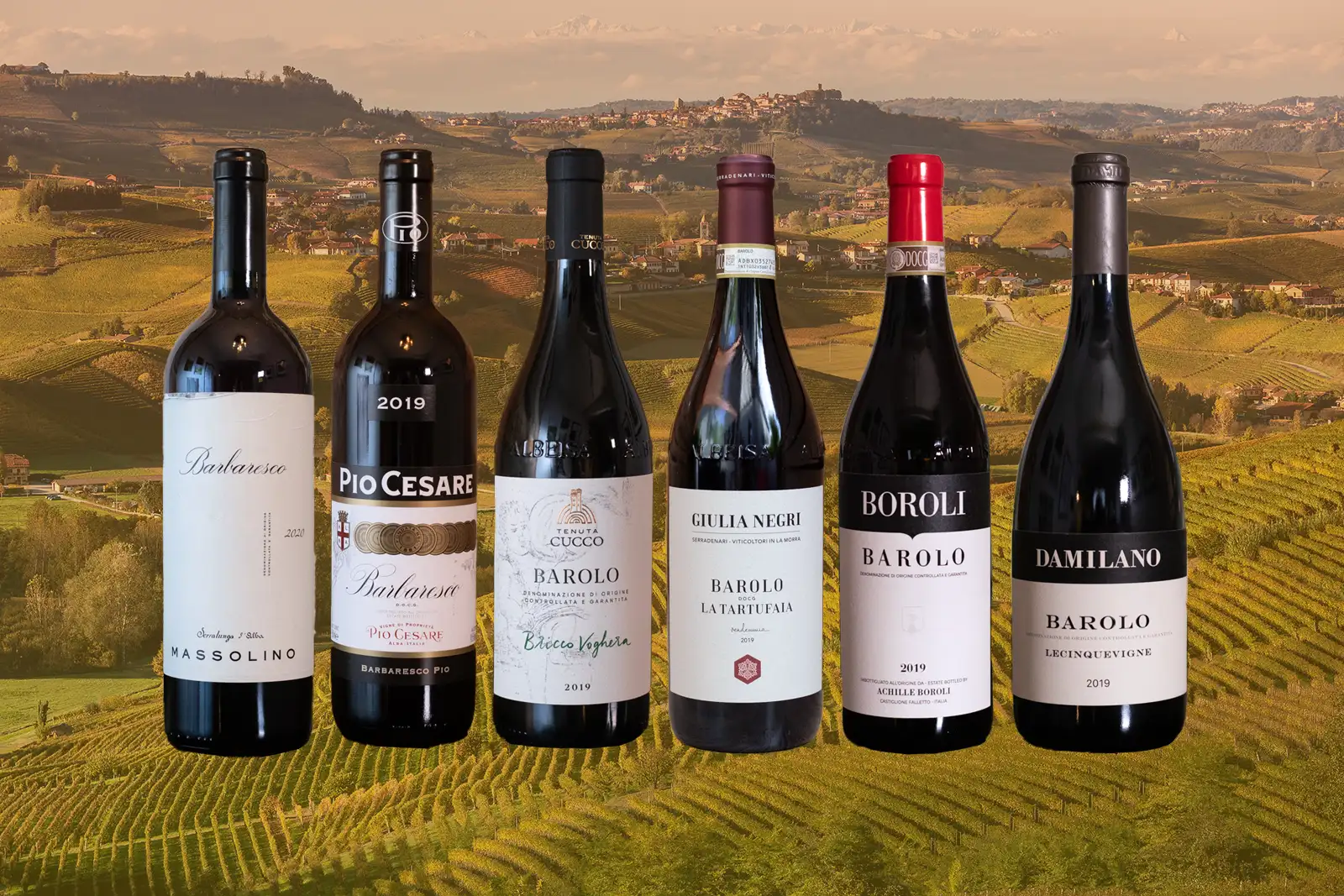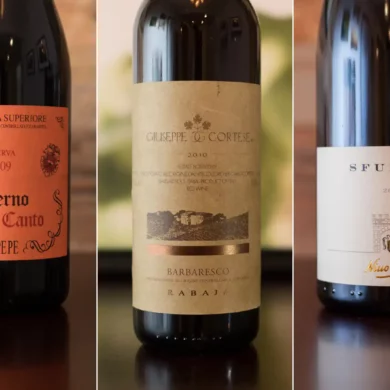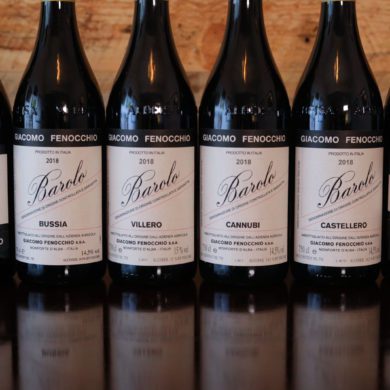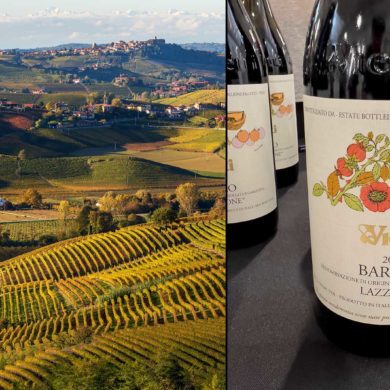They stream into my inbox with staggering regularity: offers to buy the newest release of Barolo and Barbaresco, usually with the word “approachable” embedded in the text — winespeak’s codeword for “more forthcoming upon release.” The implication is an interesting one. Fewer and fewer consumers buy wine for cellaring these days. As a result, the fine-wine trade has suddenly seen immediacy of pleasure as a virtue.
“Today, producers are more interested in looking for a more elegant style. In my opinion, this is the correct identity of the great wines of this area.”
Franco Massolino,
Massolino
And that can be an issue for iconic, age-worthy epics like Barolo and Barbaresco. Respectively, these are wines that require 38 and 26 months of aging before release, but typically demand another five to 10 years of aging in bottle before they even begin to reveal a relaxed side. Reading these email offers, one might assume that we have entered an era of having our cake (i.e. an age-worthy classic) and eating it too (i.e. drinking it tonight anyways).
However, underneath the surface, there is a connotation that this new wave of approachability has to do with climate change. Grapes are ripening faster and being harvested earlier, and while that has at times led to better phenolic development, today’s wines are also higher in alcohol as a result. For some regions, this is a disaster. For others, its an opportunity.
“Without a doubt, the [Nebbiolo] grapes can achieve more elegant tannins when they are more ripe,” said Franco Massolino of the eponymous Serralunga d’Alba estate in Barolo. “And today, producers are more interested in looking for a more elegant style. In my opinion, this is the correct identity of the great wines of this area … But the process of ripeness these days is not so easy.”
The Langhe Hills have been over this terrain of approachability before: in the 1980s, the Barolo Boys moment showcased an internationally styled version of Nebbiolo thanks to shorter maceration and barrique barrels. It was a direct affront to traditional, rustic Barolo and a schism formed between two camps, each with their own idea on where the region should go.
Today, as Massolino said, the two regions are more united than ever on the direction their wines ought to take, and climate change has largely aided that quest. But it has also proved meddlesome in other ways. In talking with three different producers about the approachability phenomenon, it became clear that they walk on a tightrope of balance with every vintage.
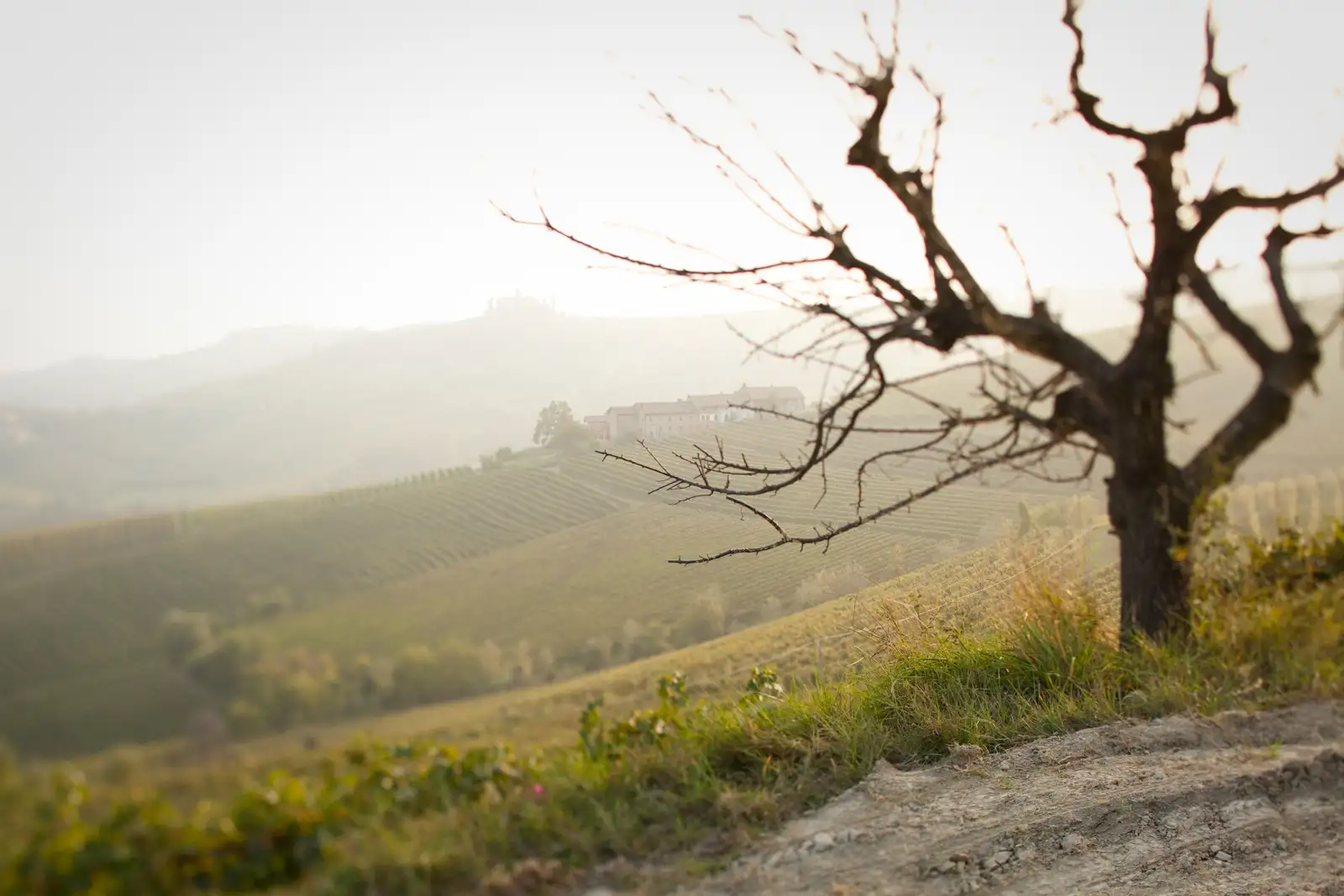
What’s Happening with Climate Change in Barolo and Barbaresco
According to Meteoblue — a website created in 2006 by the University of Basel in Switzerland to gather and collect weather data from any point in the world — the mean temperature trend line for Barolo and Barbaresco has increased by 2.5º C and 2.6º C, respectively, just since 1979. Interestingly, in that time, Barolo is seeing less precipitation on average (17.2 mm) and Barbaresco is seeing more (32.2 mm).
“The weather now is completely opposite than the weather my grandparents had.”
Federica Boffa,
Pio Cesare
However, the temperature anomalies get more interesting when you look at them on a month-to-month level, particularly focusing on the critical time of ripening and harvest from August to October. Both towns have seen the biggest temperature trend-line spikes during the height of summer, but October has seen as much as a 4º C divergence from the norm. Increasingly, harvest has slipped into September, and that window to pick grapes is getting drier, too.
“The weather now is completely opposite than the weather my grandparents had,” Federica Boffa of the 143-year-old winery Pio Cesare told me. “It doesn’t snow anymore, or if it snows it is a small amount. It doesn’t rain much in summer and we have extremely high peaks of temperature — like 30º C, 33º C, sometimes even 35º C.”
Yet Boffa also pointed out that in some ways, winemaking is easier. In only a few vintages per decade were her grandparents harvesting fully ripe Nebbiolo grapes. That pattern was set by the Langhe region’s “normal” climate of scattered but steady rain and cooler temperatures. Now, Nebbiolo has no problem achieving phenolic ripeness.
“We don’t get anymore the bitter tannins or the super astringent taste. We are able to harvest Nebbiolo when all the elements are melded together,” Boffa said.
Water Bombs and Hydric Stress
If that sounds like producers are walking down easy street, think again.
“The question of water availability underground is a big one,” Franco Massolino told me. He citing the indelibly horrible 2003 vintage, which was so exceedingly hot and bone-dry that many producers still talk about it like it was yesterday. From that vintage, Massolino learned that hydric stress can be among the most disastrous variables facing Nebbiolo.
“That vintage was extremely warm but also unlucky in that it was so poor in water. That meant we had to pick grapes that were not complete,” he said, noting that the timing of tannin and sugar ripeness was off.
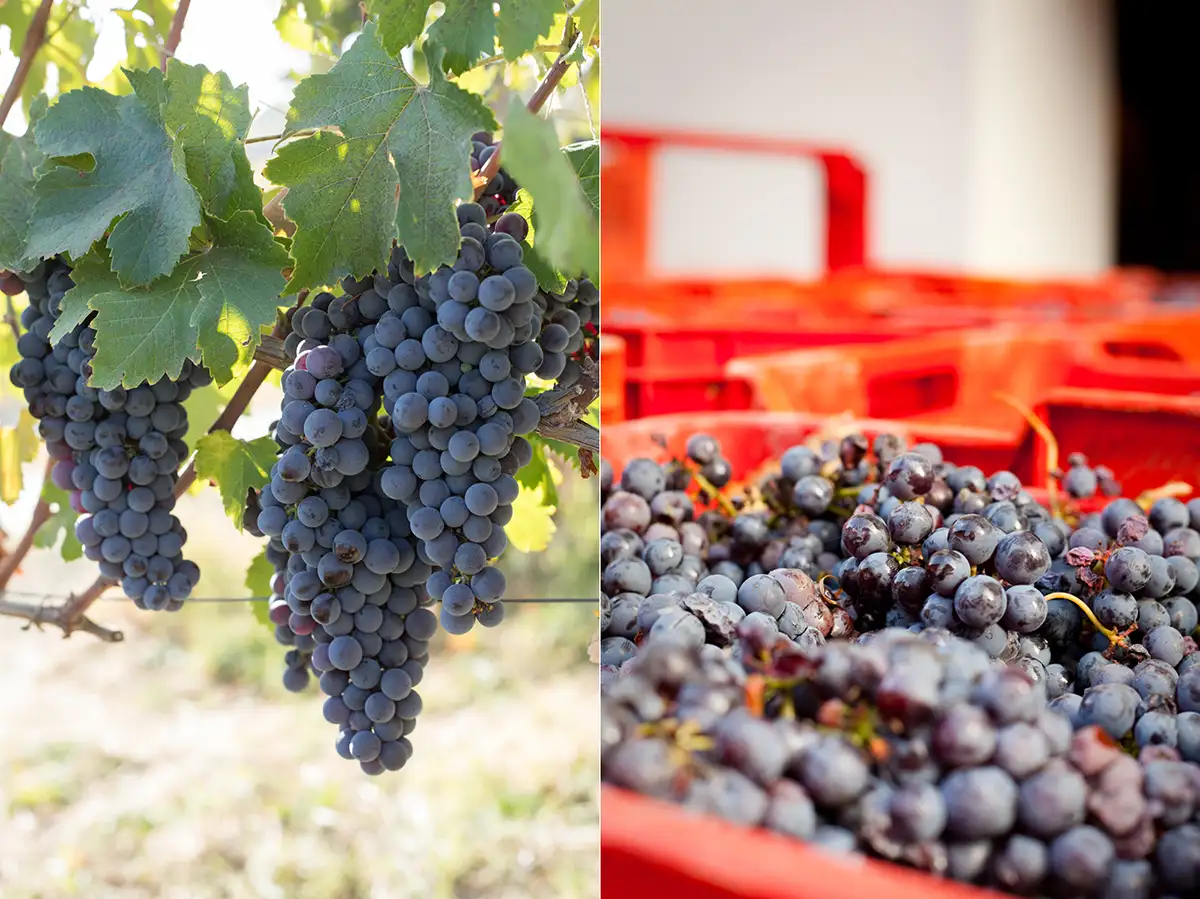
In recent vintages, the concern has not so much been about drought, but rather how precipitation is delivered. For centuries, the Langhe’s grapevines, agricultural crops and native plants have adapted to a more steady ebb and flow of precipitation. However, a chart of today’s snow and rainfall totals more closely resembles an echocardiogram.
“It is kind of tropical,” said Federica Boffa when describing the precipitation. She referred to the region’s new periodic deluges as “water bombs” which happen so fast, they fail to replenish reserves underground. Instead, the speed with which the ground can absorb the precipitation is eclipsed by the rate with which it falls. Without sufficient cover crop, it flows off the surface and away downhill.
Violent hailstorms are another major problem, so much so that several estates have invested considerably in hail nets to cover their precious hectares of Nebbiolo vines (Massolino is one of them). While these nets do not significantly impact ripening, they do provide a modicum of shade, which Massolino believes helps them avoid sunburn on the skin of the berries.
Bringing Back Biodiversity
“You have to adapt on the run. Every vintage [demands something] different. There is no recipe anymore.”
Clara Milani,
Tenuta Cucco
One way to level out the precipitation variables is by introducing more biodiversity to the vineyards and the overall landscape of the Langhe. In addition to recycling nutrients, cover crops such as native grasses, flowers, herbs and even weeds help the soil absorb and retain water while reducing erosion in the process. It wasn’t long ago that pesticide and herbicide use was rampant across the Langhe. Today, Franco Massolino reports, “it is almost impossible to find the yellow spots that only years ago you’d see on our hills [from herbicide use].”
But halting the use of these treatments is not enough. Rebuilding a natural system inside — and surrounding — the vineyards is likely the only way to absorb the many punches climate change has in store for the Langhe.
Tenuta Cucco, a certified organic estate also in the hilltop town of Serralunga d’Alba, was purchased by the Rossi Cairo family in 2015. For owner Piero Rossi Cairo and his winemaker, Clara Milani, the comparison between Barolo and Cortese di Gavi DOCG (where they own the winery La Raia) was jarring at first.
“Going to the Langhe and seeing that its only grapes and grapevines … it’s kind of strange,” Milani said.
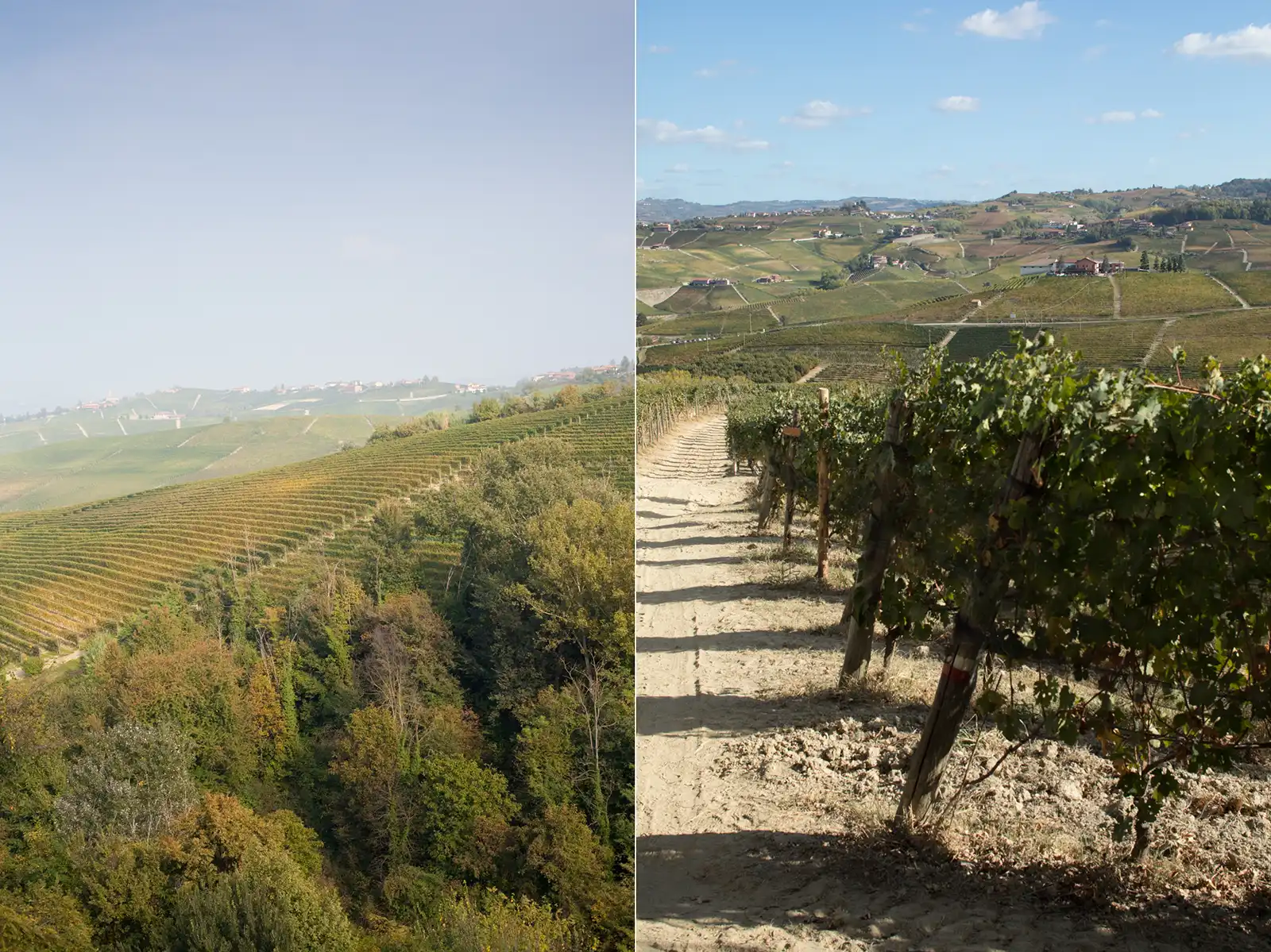
Rossi Cairo went on to add that in Gavi, La Raie feels like a living organism within its surroundings of polyculture farms and forest. Transitioning to biodynamic practices there was relatively seamless. Yet in Barolo, the landscape is dominated by the monoculture of grapevines.
“But I don’t blame people from Piemonte,” he was quick to say. “Because 50, 60 years ago, they found in Nebbiolo a new El Dorado. They planted Nebbiolo as if there was no tomorrow. But now it is difficult to go back and introduce the kind of biodiversity we need.”
That can be tricky when MGA vineyards are shared by so many producers with different philosophies. Introducing biodiversity often comes down to simply letting the ground cover thrive in your particular rows.
While that may seem like a small intervention, Milani says otherwise. “The texture of the soil is very important,” she said, noting that salveggio (cover crop) helps to make the soil more porous and absorbent. “But you have to adapt on the run. Every vintage [demands something] different. There is no recipe anymore.”
Yet biodiversity on a bigger scale can be found in certain vineyards — for instance, the isolated Serradenari cru in La Morra where Giulia Negri works (featured prominently in the spectacular wine listed below). This is a trend worth watching into the future. Biodiverse vineyards — and more significantly, biodiverse regions — can better regulate temperatures and resist disease outbreaks because of their heterogeneity. Rather than scoring cru vineyards based on their historic reputation, their south-facing aspect or a goelogical soil profile, there is a very real possibility that future prestige for the MGAs will come down to the role of biodiverse vineyard management and the effect it has on both ambient air temperatures and the vitality of the soil.
Refinement in the Cellar
So where does this leave us with more approachable Barolo and Barbaresco? Is it a product of climate change outright, or could it be the result of winemakers and the way they manage variables both in the vineyard and in the cellar?
“Even if our wines nowadays are much more approachable, it doesn’t mean that they do not age. They still keep that potential because that’s the DNA of Nebbiolo.”
Federica Boffa,
Pio Cesare
“In my opinion, I think the ready-to-drink trend that many producers are taking is a market choice,” Tenuta Cucco’s winemaker Clara Milani said, although she was careful to point out that much of this work is done in the vineyard.
At Pio Cesare, they’ve accommodated the changing climate not only in their vineyard practices, but in the cellar.
“Over the last 10 years, we have decided not to do any more pumping over,” Boffa said, referring to the process of pumping the wine from the bottom of the tank back over the fermenting must as a means of extraction. Instead, they prefer the control of manual punchdowns to gently extract the softer expressions of Nebbiolo while avoiding the more astringent elements which can seep into the wine from more aggressive processes. They have also embraced large oak vessels, and prefer more time in bottle before release for both the Barolo and Barbaresco wines.
“All of these elements are making our wines more approachable than how they were in the past,” noted Boffa, but she added that this was less about fashion and more about the personal tastes of the family, and their need to make wines to match that style in a warming climate.
“On the other side, even if our wines nowadays are much more approachable, it doesn’t mean that they do not age. They still keep that potential because that’s the DNA of Nebbiolo.”
Approachable Compared to What?
Approachable compared to young Brunello or young Bordeaux? Maybe.
But approachable compared to young Pinot Noir? That’s another matter.
Which brings us back to the original query on whether these wines are truly becoming more approachable in youth, and whether climate change is to account for that. As much as I’d like to give you a simple answer, it is, of course, immensely complicated and highly dependent on site and producer’s practices.
We can safely say that reliable ripening has been a net positive for both DOCGs. Tannins, while still vital and in high concentration, are more polished from the get-go. And while the growing season has contracted, it hasn’t come at the expense of aromatic complexity.
However, alcohol has increased, and no matter how well integrated it may be, that effects how we serve Barolo and Barbaresco, and how much we imbibe. (Personally speaking, the difference between a 14% and 15% ABV wine is huge on my system).
But I would also urge consumers to counter any sales pitch that leans heavily on “approachability” with the corollary “approachable compared to what?” These wines are, after all, still Barolo and Barbaresco. This is Nebbiolo when it has a lot to say, but in year one after release, you are only getting a glimpse of the first chapter. Perhaps it is the tightly wound spirit and frenetic energy of Barolo and Barbaresco — something climate change has not altered, and likely never will — that makes me object to “approachability” as a descriptor. Approachable compared to young Brunello or young Bordeaux? Maybe. But approachable compared to young Pinot Noir? That’s another matter.
If you are dying for an immediate hit of varietal Nebbiolo’s cherry-meets-rose-meets-earth beauty — one that can be sipped without much meditation — you can always go for a Langhe Nebbiolo or Nebbiolo d’Alba. After all, that’s what they’re there for.

6 Recent Barolo and Barbaresco Wines
2020 Massolino Barbaresco
The nose skews more towards herbal and leathery than floral and fruity with this satisfying Barbaresco (★★★★ 3/4) from Massolino. Tightly wound on the nose, it will take some time to fully parse its details, but the notes are classic for this region: cherry, star anise, baking spice, rose. The tannins are still fairly wooly and pert, but they feel closer to maturity than most Barbaresco. Save a glass for a second night open, when this wine really sings. ABV: 14%
2019 Pio Cesare “Barbaresco Pio” Barbaresco
Here is a Barbaresco that asks “are you sure Barolo is the more structured of the two?” Tightly wound like a steel cable, this momentous wine (★★★★ 3/4) is quite potent on the nose, conveying berry fruits more black than red, star anise, cinnamon stick and tilled earth. The tannins feel like they need more time to fully integrate, leaving the wine a little closed off this early in its evolution. But in five, 10, 15-years time, this will be an iconic wine. ABV: 14.5%
2019 Tenuta Cucco Bricco Voghera Barolo
Interestingly enough, this wine (★★★★ 3/4) from a little-known Barolo cru called Bricco Voghera was among the most delicate, along with La Tartufaia next. The reason for this is likely Bricco Voghera’s northeast-facing exposition, which takes in morning and midday light but cools off sooner at the close of day. The elements of the nose are still holding on to each other like a clinched fist, with tones suggestive of black cherry, blue flowers and mushroom all compact and tight. With time, once this eases, it will be remarkable. However on the palate, the fruit feels relaxed even if the wooly tannins and sharp amaro flavor give the wine a sense of tension. Lovely citric finish. Wait five, 10 or 15 years if you can, or drink young but slow-and-steady over a few days to let it emerge. ABV: 14.5%
TOP PICK: 2019 Giulia Negri “La Tartufaia” Barolo
With its name serving as a tribute to the white truffles once hunted on the property, this stunning Barolo (★★★★★) from Giulia Negri is as close as she comes to a classico blend: 80% comes from the high-elevation cru of Serradenari, while the remainder is from the lower-elevation Brunate. That cuvée seems appropriate for the times: 80% lean, fresh and delicate; 20% powerful and expansive.
You know you are in for a treat when this wine pours forth from the glass. The color is light ruby like most Nebbiolo, but it shines like a jewel with its radiance. The aromas are classic Barolo, but it is the way they harmonize at this early stage that is most noteworthy. The same can be said for the supple tannins and silky acidity that simply glides across the palate. The energy is still a bit nervous, so labeling this wine as “approachable” wouldn’t fully be accurate. But it is delicious now, and ought to be delicious for many years — even decades — to come. ABV: 14.1%
2019 Boroli Barolo
The most internationally styled wine of this set, the Boroli Barolo (★★★★ 1/4) has a noticeable oakiness to it (raised for 24 months in barrique) that somehow doesn’t fully mask the typical tones of the area. But make no mistake, this wine is still a Barolo, despite those whispers of vanilla (which is all they really are: whispers). The nose is quite enjoyable, a tapestry of cherries, earth and mushrooms, while the palate is direct and straightforward with broader tannins. Of the wines tasted, I had the hardest time envisioning where this wine was headed down the road. ABV: 14.5%
2019 Damilano “Lecinquevigne” Barolo
Unlike Sangiovese, Nebbiolo doesn’t often show savory inclinations, but it can occur from time to time, as it does with this blend (★★★★ 1/4) from Damilano of five cru vineyards from around the Barolo zone (Cannubi, Brunate, Cerequio, Liste and Raviole). This wine had fairly delicate acidity on the palate, with firm and ripe tannins lending it structure.
I did find it unnecessary and excessive that Damilano packages this wine in a leaden glass bottle that weighs 1600 grams when full (3/4 of a pound heavier than normal). ABV: 14.5%

Subscribe to Opening a Bottle
Are you a die-hard fan of Italian wines? Good thing you found us. Join Opening a Bottle for more Nebbiolo content, our curated list and profiles of the 50 Essential Winemakers of Italy, and access to our live and recorded wine classes — all for just $49/year. Your support keeps independent wine writing and photography going.
Note: Interviews were edited for clarity. These wines were provided as samples by various importers and PR representatives. Learn more about our editorial policy.
